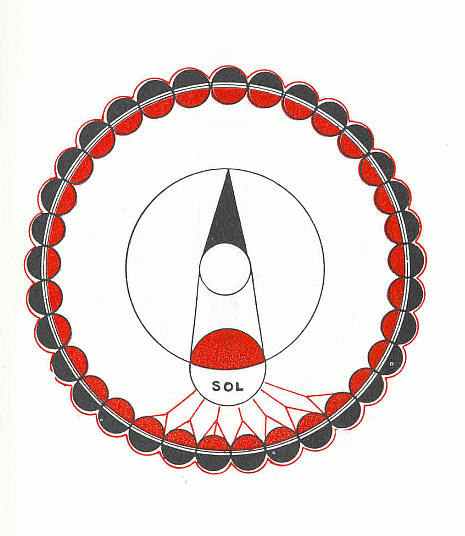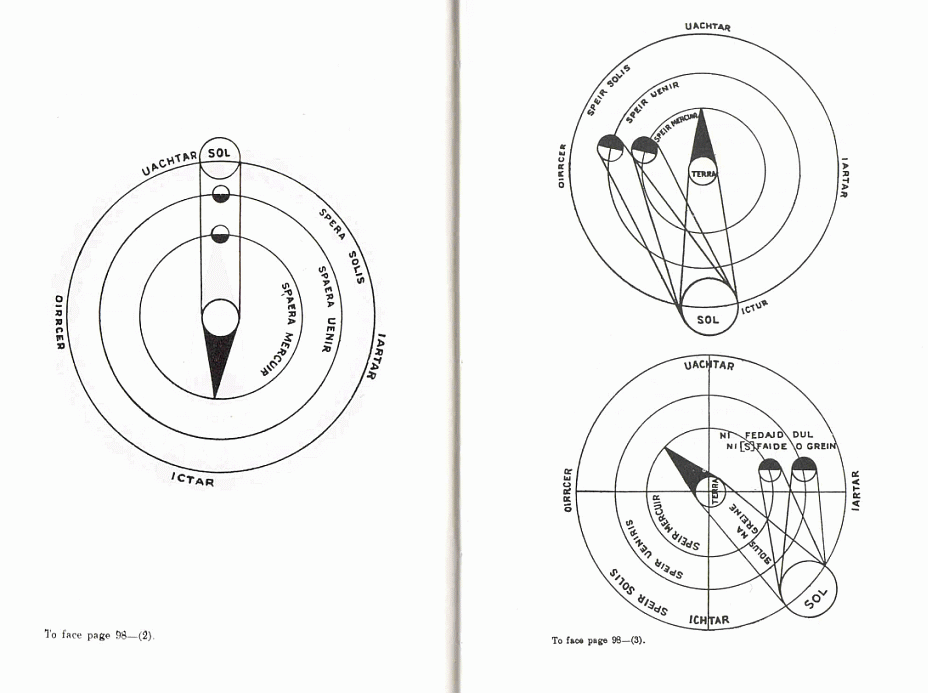
It is evident, as I have stated, that the light of all the stars comes from the sun, and that they are round like a ball, like the sun and moon, and the reason why their roundness is not evident as is the roundness of those other two, is because they are all above the sun, far from us, except Venus and Mercury; and half of each star which is above the sun is illumined by it the sun at whatever point of their own orbit these stars are; i.e., whether they are in the same degree as the sun or whether they are far from it, or near to it, or in front of it, or behind it, from it they all receive light. Every time any of these planets, that are above the sun, are directly in front of it, then their light is most prodigious in front of the earth for two reasons. The first reason: —A person who is in darkness thinks the light he sees outside the darkness more brilliant than a person who is in the light itself, and accordingly the person who is in the thick dark shadow of the earth at night, as he beholds the planets that are directly in
The planets that are beneath the sun, i.e., Mercury and Venus, never arrive opposite the sun and are never in the quadrate aspect. Not thus are they, but near it always, before or behind it, and the nearer they are to the sun the less is their light, and the further they are from it the greater the light.
The light, however, of the planets that pass opposite the sun, is always increasing by degrees, until they reach the place beyond which they cannot go, and where they must turn towards the sun again, and during that backward motion, their light is on the decrease until they are in the same degree as the sun, beneath it, then the half of them nearest the sun is light and the other half dark, as I said in reference to the moon, when it is in the same degree as the sun; for it is never visible except when it is at least fourteen degrees to one side of the sun, i.e., at its prime, or at its extreme wane.
Those planets are also after the same manner; for when they are to the east, twelve degrees in front of the sun turning towards the sun, or when they are in motion twelve degrees to the west of the sun they appear horned, after the manner of the new moon, and when they come away from the sun, as they cannot advance further, they have their full light, although that change is not evident to us as is the change of the light of the moon, as they are much further from us than the moon. Therefore, when their light is great, their bulk is small on account of their distance from us. When they are nearest the earth, the beam that comes from them appears
Here below is the figure that will clearly shew how the sun illumines all the stars, as well as the planets; and the meaning of this figure shows there is the furthest distance they can go from the sun, i.e., in no place in the universe that is not brightened and illuminated by the sun.

I will make again another figure to show how Venus and Mercury, which are beneath the sun, are illumined by it, and how they come into the same degree as the sun, as near as they can go to it.
I will make again the third figure here to explain better than this, how Venus and Mercury are illumined by the sun, and I will place them in the east of its orbit above the earth, so that they cannot go a greater distance from the sun than they are in front of it at dawn.
Now I will make the fourth figure to demonstrate better how they obtain their light, and I will place them on the western side of the sphere above the earth at the place in which they are continually (?) at evening time.
